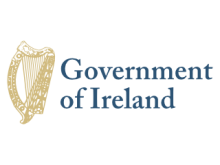Resource information
These Regulations amend the European Union (Good Agricultural Practice for Protection of Waters) Regulations 2014 so as to give effect to the Commission Implementing Decision on granting a derogation requested by Ireland pursuant to Council Directive 91/676/EEC concerning the protection of waters against pollution caused by nitrates from agricultural sources. They also make technical amendments to sections 17 and 26 of the principal Regulations and insert a new Part (7) on implementation of the Commission Decision. The Minister for Agriculture, Food and the Marine shall be the competent authority for the purposes of verifying compliance with a derogation granted under the Commission Decision and shall (arrange to) carry out, such monitoring, controls and reporting as are necessary for the purposes of Articles 7, 8 and 9 of the Commission Decision. The Environmental Protection Agency shall prepare annually a report of the results of water quality monitoring carried out by local authorities for the purposes of Article 7(3) of the Commission Decision. A new Schedule (5) is inserted. This Schedule specifies conditions applying in relation to derogations regarding the application to land of manure.
Amends: European Communities (Good Agricultural Practice for Protection of Waters) Regulations 2014 (S.I. No. 31 of 2014). (2014-01-28)



